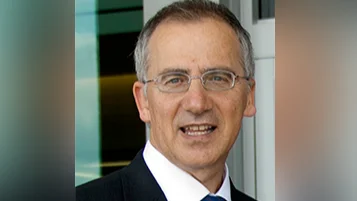
At UTHealth Houston, a team of researchers is expanding the boundaries of space medicine, seeking solutions to health challenges that impact both astronauts and people on Earth. Bentley Bobrow, MD, vice president for health care innovation at UTHealth Houston, and Kris Lehnhardt, MD, director of the Space Medicine Program, are leading efforts that use insights from space to address issues like cancer therapies, dementia prevention, and rural health care delivery.
“There’s a common misconception that space medicine is only about caring for astronauts in orbit,” said Bobrow. “But some of the most promising impacts of this work are here on Earth — from discovering new cancer therapies to preventing dementia and improving rural health care delivery. As we learn to monitor and care for humans in space, we uncover insights that will transform lives back home.”
The program has built a network of experts working together on projects such as virtual reality-based clinical training and developing printable skin grafts in microgravity. These initiatives aim to bridge scientific advances with real-world medical needs.
“We’re not doing science just for the sake of it,” said Lehnhardt. “We want our work to change the way people practice medicine, both on a spacecraft and in a community clinic in rural Texas.”
By focusing on applied research that can be translated into practical solutions, the team is tackling questions about how biological systems behave in unique environments like microgravity. Lehnhardt explained: “What happens to the cardiovascular system in microgravity? What happens to the brain over six months in space? These are questions with profound implications not just for astronauts, but for aging populations, cancer patients, and the five million Texans living in rural communities.”
Bobrow emphasized interdisciplinary collaboration within UTHealth Houston and with partners across Texas Medical Center and beyond. The program also aligns its goals with NASA’s human health objectives.
“NASA has been really clear,” Lehnhardt said. “They want to invest in things that solve actual medical challenges for spaceflight, and ideally, for patients on Earth as well. That’s exactly what we’re aiming to do here.”
Lehnhardt noted Houston’s unique position at the intersection of medical innovation and space exploration: “We’re connected to NASA, we’re embedded in the largest medical center in the world, and we have the academic freedom to do bold things.”
The Texas Space Commission was formed by state lawmakers in 2023 to encourage growth across aerospace industries by supporting research partnerships between universities like UTHealth Houston and private companies (https://www.txdot.gov/projects/spaceport-development.html).
UTHealth Houston leaders Kristi Mena, PhD—an expert in public health—and Xiaoqian Jiang, PhD—a specialist in artificial intelligence—are shaping future directions through leadership roles within a proposed Space Medicine and AI Center. Mena has worked closely with NASA on astronaut safety protocols; she now proposes an emerging field called aerospace epidemiology as commercial space travel grows.
“With more civilians entering space, we need to think like public health professionals,” Mena said. “UTHealth Houston has a chance to lead this emerging discipline.”
Jiang is integrating AI throughout program projects by building systems such as an Astronaut Digital Twin—virtual models designed to predict risks and recommend personalized countermeasures during missions.
“By tightly coupling advanced AI with precision medicine, we aim to give every crew member a virtual clinical team that travels with them no matter how far from Earth,” Jiang said.
Other ongoing projects include high-fidelity astronaut medical training using simulation; biomechanical modeling led by Srihari Menon at Texas A&M University for injury prediction; development of oral fullerene nanoparticles against cosmic radiation by Sunil Krishnan at McGovern Medical School; remote vital signs monitoring technology by Sam Beger at UTHealth Houston with Gerard Coté at Texas A&M; and nonpharmacologic strategies for bone loss mitigation spearheaded by Mary Farach-Carson at UTHealth Houston School of Dentistry.
Farach-Carson’s low-intensity vibration research aims not only at protecting astronauts’ bones but also offers new possibilities for osteoporosis treatment on Earth.
“Bone loss in space happens much faster than on Earth, making it an ideal model to study skeletal degeneration,” Farach-Carson said. “If we can stop or slow that process in space, we can change the game for millions suffering from bone loss here at home.”
Bobrow addressed concerns about investing resources into space medicine when terrestrial problems persist: “People ask, ‘Why are we spending so much time and money on this when we have many enormous problems here?’ But we don’t see this as either-or... The truth is, space gives us an unparalleled laboratory to accelerate what we know about human physiology and human health and how to solve some of the most challenging diseases."
Lehnhardt concluded: “And it’s not just about new molecules or new drugs... It’s also about new systems — like how we monitor health, how we deliver care in remote or hostile environments, and how we train providers in isolation.”
According to project leaders such as Beger: “Space demands self-sufficiency... Our goal is to give astronauts the tools to understand and manage their health — anytime, anywhere. And just as importantly, this work could enhance remote care delivery in rural or underserved communities on Earth.”